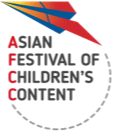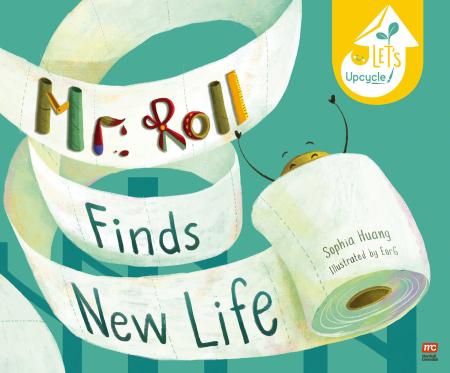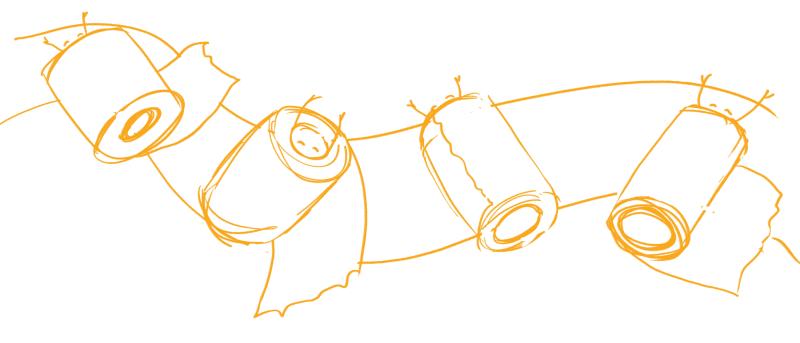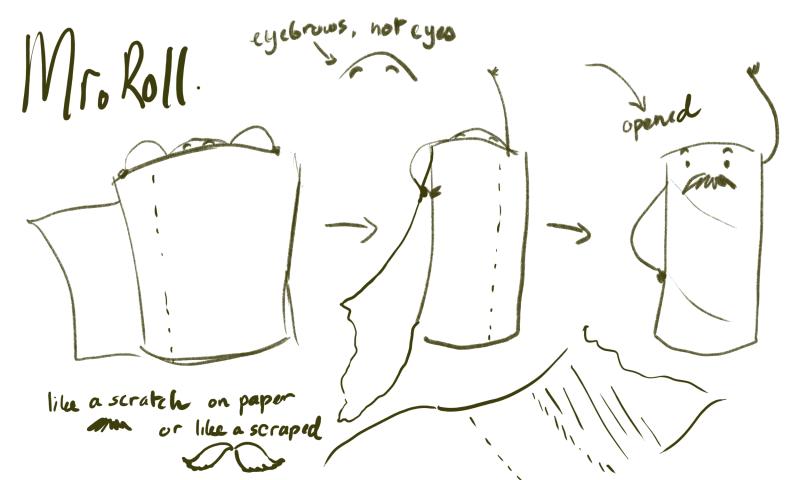Mr. Roll Finds New Life
By Sophia Huang, illustrated by EorG
Mr Roll is a regular toilet paper tube. He is hardworking and does his job well. But when the paper runs out, he is tossed aside and labelled as trash… Is this the end for Mr Roll? Come along with Mr Roll as he discovers that there is so much more that he can be.

Sophia Huang (Author)
Sophia Huang is passionate about upcycling materials into toys and art with her three children, a hobby she shares on her Facebook page, Craftcycle for Kids. Her work is regularly featured in the media, and she has also participated in a video campaign by the National Environment Agency aimed at lowering consumption and waste in Singapore. A highly sought after speaker, she enjoys introducing the concept of upcycling to preschool and primary school children through author visits and hands-on craft and storytelling workshops.
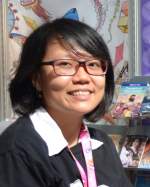
Evelyn Ghozalli @ EorG (Illustrator)
Evelyn Ghozalli has illustrated more than 80 children’s stories and written several under the pseudonym EorG, and has won several awards, including the Samsung KidsTime Award 2016, Best Illustrator Award at the Islamic Book Fair 2018 and the Indonesia Art Award 2018. She is also the founder of the Indonesian Children’s Book Illustrators Circle (KELIR).
Feature Interview
Why do you start writing for children? Is there a reason, or was there some catalyst or impetus?
Sophia: The truth is that it was during my maternity leave, when my second child was born. I was feeling very bored, so I started to put pen to paper and try to kill time. I think my first series of books, which are on nature, were inspired by my mom and the things that she used to do with me, such as playing with Touch-Me-Nots, and sucking nectar from flowers. And these are all things that the older generation used to do, as part of their play time, which I think is something very lost today in terms of children's in terms of childhood, because we have children stuck to their devices, you know, and it’s just to introduce kids to the old ways of play, and how they can, you know, fall in love with nature by playing with it and how it's actually fun. And they don't have to be cooped up at home all the time.
Do you think that environmental themes are kind of a recurring theme across all your books?
The second series, which is about upcycling, is really a continuation. In fact, upcycling was something I started doing before I started writing the books. Upcycling pre-dated all the way back to around 2015 when my daughter was born. She was two years old, and the next day after she had a birthday party, so the next day, we had lots of boxes and someone gifted her a set, a kitchen set, and a supermarket trolley, and also a cash register. And so the next day when she woke up, we had used cardboard boxes to make her makeshift supermarket. And that was really the start of the journey of upcycling that I have made.
How do you think we can continue then to encourage children to care for the environment we live in?
I really want them to start thinking about their trash and how it can have another purpose apart from being thrown away or recycled, to start making their own toys instead of buying. When children are creating and making things, it kind of seems like they will stop consuming or consume less, they'll stop asking you, “please can I buy a toy?”, because they are already being entertained; they have already been preoccupied with creating and making crafts or toys. And so I hope that when we start to think about all these things, you know, upcycling is really the start of a conversation on how we can make greener choices. It's a stepping-stone. And it's a very good way to tell children and to teach children about saving the planet.
How did you eventually decide on Mr. Roll as the protagonist of your story?
I chose the toilet tube because it's very versatile. There are lots of things that you can do with it. If you look at the character, it's not just a roll, you might think of someone else, such as an elderly person, for example. I actually wrote this story for my dad, to kind of remind him that there is purpose and significance even after retirement. And it's, you know, really a story about hope. It's not just talking about upcycling, but it's also about hope.
What do you hope children will get out from Mr. Roll Finds New Life?
I really hope that children will start thinking about their trash—what else they can make out of the toilet paper tubes, and not just that, they might be cardboard boxes, or egg trays or even plastic bottles. When they start creating, that's when they lower their consumption and they don't consume so much. I hope that through upcycling and making their own crafts, people, parents, children will start making greener choices and in so doing, just make that small difference by making their own toys instead of buying them. In that way, if everyone plays their small part, together we can make a big difference.
Where do you think books or like books like Mr. Roll Finds New Life can come into the picture in this whole conversation about conservation and upcycling?
Some of my friends already started upcycling with their kids once they started reading the book. They made some of the crafts at the back, or what Mr. Roll has turned into; it's a secret I'm not gonna tell you, you have to read the book yourself! I think it's just seeing how it's starting a movement of how people just thinking of how they can repurpose their trash and creating stuff. I think that along the way, they're also learning things like creativity and science and engineering when they don't even realise it. I like that it's actually influencing the circle around me.
What were your first thoughts when you receive the story for Mr. Roll Finds New Life?
Evelyn: Yes, my first thought was why they know my name. But aside from that, from the manuscript itself, it caught my attention based on just the two pages of the script, because even though the story is an ordinary tissue role, Sophia depicted Mr. Roll as human as possible with a real job. And based on Sofia's work previously, now I get that it was based on her father.
What were some creative choices that you made when illustrating this book in terms of the style?
Yeah, based on the narration that triggered me to create Mr. Roll as alive as I could. That was probably, some of the, maybe you can call it creative choices because I usually avoid stories with inanimate objects. I try to avoid comical characters that are usually pasted onto inanimate objects or characters. But I think in the story because the character feels so alive, I tried to make Mr Roll as alive as he could be, but he has to have a special signature that differentiates him from other inanimate objects. Since the name is Mr. Roll, and “mister” reminded me of Movember, the annual celebration of moustache, “Tadaa!” Mr. Roll was born from a regular roll to a special roll with a big rounded moustache.
Were there any specific illustration techniques or style that you chose?
Yes, the technique I use is digital painting, I've been using digital painting since… maybe I shouldn't mention. To tell you the truth, the fast-growing children’s book industry nowadays demanded us illustrators to jump into digital media. To be more effective in creating, I use a brush with a texture that resembled paper texture and spread a paint to keep in mind that this story is about paper. I had fun creating the end papers, it was a treat for me to just create on my own without a script.
Do you do primarily illustration for picture books? Or do you do other illustrations as well? Is there a difference when you do illustrations for picture books compared to other illustrations?
I do other illustrations aside from picture books but I'm mainly known to be specialising in children's books, but I do book covers, advertorial, storybooks, chapter books, basically anything with illustration, but mostly in children's content.
The difference probably is that the picture book has more challenges because we have to incorporate the illustration with the texts, because the concept of picture book is that both have to have a sense of unity so you cannot read the text on their own just like that. You have to incorporate the text with the illustration to make the story understood. That's the general challenges and maybe the biggest difference to maybe a story book or chapter book because in the chapter book, you can read the story on its own, while the illustration is to enhance that part of the story.
Why then did you choose to do picture book illustrations?
Okay. I like picture books because picture books are mostly my trigger to enter the book scene or books in general? Right before I am able to read. And then actually, lots of people said that picture books are a gate, some kind of gate to literacy or maybe literature for kids to enjoy and add more to their reading levels. And indulge, being indulged in the book scene and the book world.
Check out Mr. Roll Finds New Life at our Festival Bookstore now!
